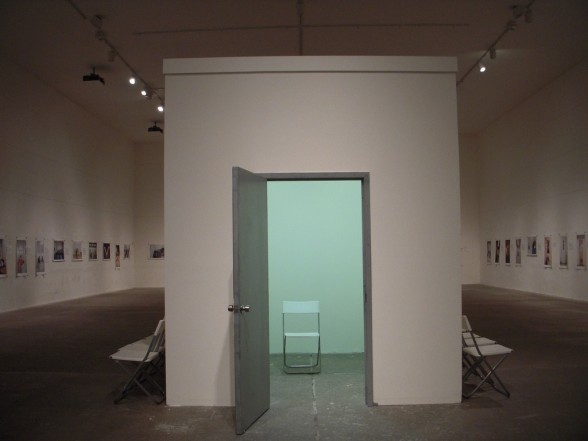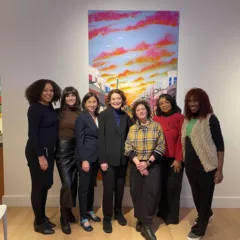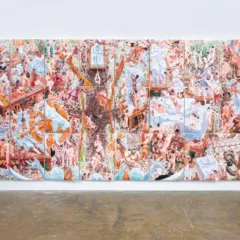Richard Ross’s project in the Icebox

Ross’s heartbreaking photo project is about solitary confinement of children in the juvenile detention system. The work is the anchor of a three-person show, also called Juvenile in Justice, spanning the first floor of Crane Arts. While Ross’s is the one that will provoke tears, the works of the other two artists, Roberto Lugo and Mat Tomezsko, are on target in dealing with large urban issues of family, at-risk youth and how or even whether art can help with problems.
Ross has been working on his documentary Juvenile In Justice project for a number of years in facilities from Alaska to Hawaii and New Jersey to Texas. The photographer is an activist who wants to help correct the injustices in the juvenile system, and his photos have been traveling the country raising issues about the unfair treatments and conditions in the facilities.
While the photos are documentary they are also beautiful. Ross hides or masks the faces of the children but portrays them and their surroundings in such a way that you feel the childrens’ states of mind, if not their individual personalities. The personalities of the buildings on the other hand are strong and shocking — These are cold, cruel, impersonal places. There are no adults in evidence in the photos, but everywhere they are suggested, by the shackles, the walls, the unrelenting sense of punishment. It’s troubling to look at and think about.
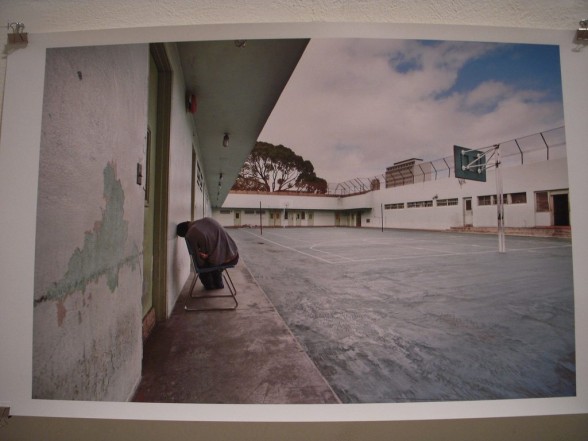
Just an example, one photo shows a young person alone and hunched over, leaning his head against a wall at an outdoor basketball court. The play yard is penned in by ugly stucco walls on all sides but there’s beautiful blue sky with swirling white clouds above and a nice big tree beyond. It could be anywhere, but it’s Hawaii, Paradise, no less.
The large, unframed photos hung in the Icebox are accompanied by stories about the children. If the photos are not enough, the stories will slay you on the spot — children who have run away from parents with mental health problems or parents who drink and do drugs and neglect them or worse; children who have behavior issues and are unruly at school. These children are victims first and perpetrators of petty infractions later, and the punishment for them in these facilities does not fit.
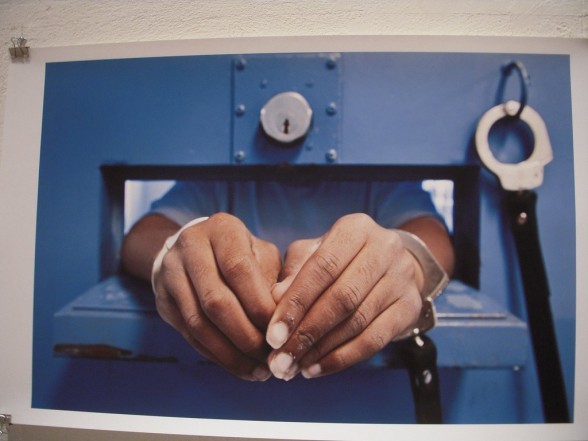
Ross, whose work is activist, has several petitions on his website that invite you to register your support of changing the juvenile justice system. Ross spent 24 hours in isolation in one facility last May and you can see a time-lapse slide show of his nerve-wracking, craziness-producing day of incarceration on his site.
The windowless Icebox, one of Philly’s premier spaces to see art, ironically seems the big brother to the small isolation chamber installed within it. It’s a funny serendipity to see the art world/real world echo.
Roberto Lugo’s streetwise ceramics in the Grey Area
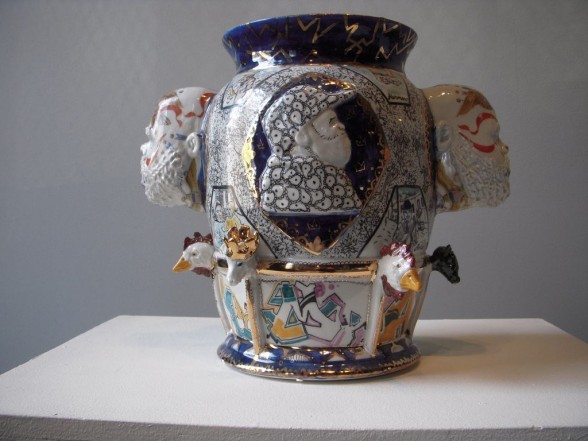
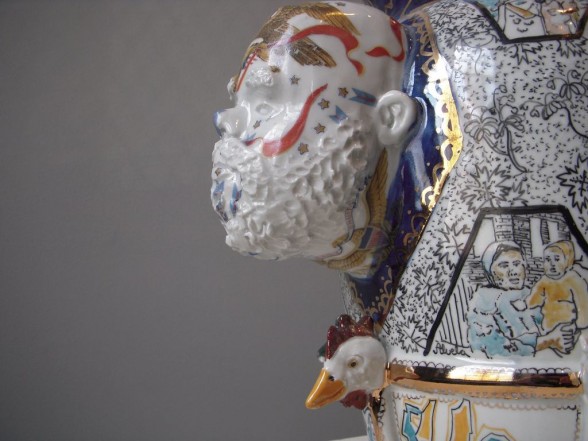
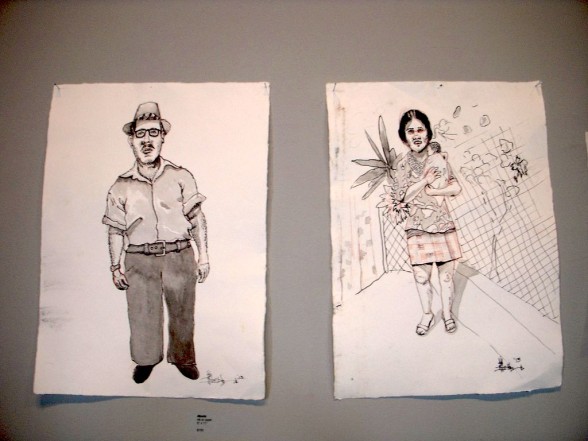
Roberto Lugo’s colorful and bold whimsical objects use rival gang colors and a decorative style influenced by the street to convey life lived on the outside of these facilities, but life that is aware of what’s on the inside. There is struggle and joy in Lugo’a original, beautiful and forceful jars, pots and statues that challenge standard definitions of beauty. Lugo’s affirmations of family, self and life are a strong counterpoint to Ross’s works of isolation and detachment..
Mat Tomezsko’s paintings in the Big Hall
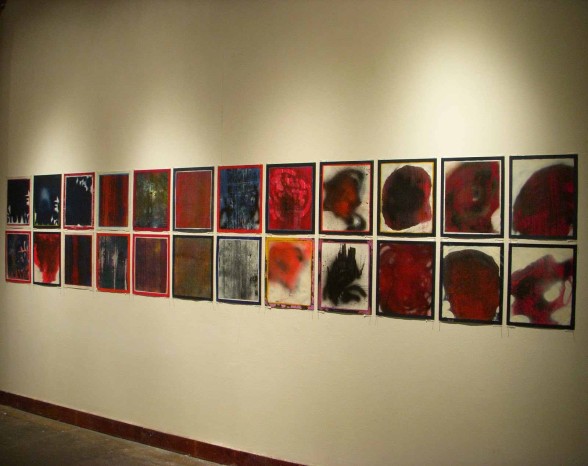
The paintings of Mat Tomezsko, 94 in all, make up a series called “There is No.” The works, many of them blood-red in color and visceral as a wound, were made by Tomeszsko when he worked with young people at the shelter, Covenant House, and the paintings represent the 94 persons researchers postulate are affected by one act of violence. View more works at his InLiquid page.
Art as witness, artists as facilitators
This big multi-faceted project, curated by Julien Robson, independent curator recently at PAFA, and Rachel Zimmerman of InLiquid, includes a host of social-justice-related activities, panels, films and talks. The community activities are there to facilitate discussion and change, and it’s great to see it. While art can’t move mountains and cause change, artists can be facilitators, and through their art, witnesses to issues of human concern. Art can stir emotions, incite the mind and beat the drum for change and here in Juvenile In Justice it does all that.
Juvenile In Justice is up at Crane Arts through Dec. 12, 2013, with a closing reception that day beginning at 6 PM.


